
Mahler Festival: Royal Concertgebouw Orchestra and Klaus Mäkelä in Mahler's Symphony No. 8 (English)
Main Hall 16 mei 2025 20.15 uur
Royal Concertgebouw Orchestra
Netherlands Radio Choir choral conductor: Benjamin Goodson
Laurens Symfonisch choral conductor: Wiecher Mandemaker
Le Chœur de l'Orchestre de Paris choral conductor: Richard Wilberforce
National Children’s Choir choral conductor: Irene Verburg
National Boy’s Choir choral conductor: Irene Verburg
Klaus Mäkelä conductor
Hailey Clark soprano (Magna Peccatrix)
Golda Schultz soprano (Una poenitentium)
Miriam Kutrowatz soprano (Mater gloriosa)
Jennifer Johnston mezzo-soprano (Mulier Samaritan)
Okka von der Damerau mezzo-soprano (Maria Aegyptiaca)
Giorgio Berrugi tenor (Doctor Marianus)
Michael Nagy baritone (Pater ecstaticus)
Tareq Nazmi bass (Pater profundus)
Gustav Mahler (1860-1911)
Symphony No. 8 in Es major ‘Symphonie der Tausend’ (1906-07)
for orchestra, eight vocal soloists, children’s choir and mixed choir
Hymnus: Veni, creator spiritus
Schluβszene aus Goethes ‘Faust’
no interval
end ± 9.45 PM
Royal Concertgebouw Orchestra
Netherlands Radio Choir choral conductor: Benjamin Goodson
Laurens Symfonisch choral conductor: Wiecher Mandemaker
Le Chœur de l'Orchestre de Paris choral conductor: Richard Wilberforce
National Children’s Choir choral conductor: Irene Verburg
National Boy’s Choir choral conductor: Irene Verburg
Klaus Mäkelä conductor
Hailey Clark soprano (Magna Peccatrix)
Golda Schultz soprano (Una poenitentium)
Miriam Kutrowatz soprano (Mater gloriosa)
Jennifer Johnston mezzo-soprano (Mulier Samaritan)
Okka von der Damerau mezzo-soprano (Maria Aegyptiaca)
Giorgio Berrugi tenor (Doctor Marianus)
Michael Nagy baritone (Pater ecstaticus)
Tareq Nazmi bass (Pater profundus)
Gustav Mahler (1860-1911)
Symphony No. 8 in Es major ‘Symphonie der Tausend’ (1906-07)
for orchestra, eight vocal soloists, children’s choir and mixed choir
Hymnus: Veni, creator spiritus
Schluβszene aus Goethes ‘Faust’
no interval
end ± 9.45 PM
Toelichting
Gustav Mahler (1860-1911)
Symphony No. 8
‘Try to imagine the whole universe beginning to ring and resound. There are no longer human voices, but planets and suns revolving,’ wrote Gustav Mahler on August 18, 1906, to his friend Willem Mengelberg (chief conductor of the Concertgebouw Orchestra between 1895 and 1945). A few days earlier, Mahler had completed his sketch of the Eighth Symphony in little more than three weeks. That was quite an achievement after the over-full 1906 concert season, commemorating the 150th anniversary of Mozart’s birth. In Vienna, Mahler had conducted five Mozart operas in succession. In between, he conducted a production of Wagner’s Lohengrin and went on concert tours to Antwerp, Amsterdam, Breslau, Berlin, Munich, and Essen, where his Sixth Symphony was premiered. In Graz, Mahler attended the Austrian premiere of Richard Strauss’s Salome. Mahler had hoped to conduct this opera in Vienna in 1905. But at the time, the censors balked, and Mahler threatened to resign, to no avail.
During his subsequent summer holiday in Maiernigg on the Wörthersee, Mahler found it hard to unwind. So, he immediately began working on a new symphony based on the ninth-century church hymn, Veni, creator spiritus. Mahler worked at such a frantic pace that he was halfway finished before realizing he did not know the complete text of the hymn and was unsure about the meaning of some passages. He called on the help of a friend, whose answers arrived by telegram. Another telegram arrived with an urgent request from the emperor to conduct the Marriage of Figaro at least once in Mozart’s birthplace, Salzburg. So, Mahler set off with a copy of Goethe’s Faust in his pocket. Composing went on as usual.
During those years, Mahler was at the peak of his physical and psychological prowess. It wasn’t until the summer of 1907 that disaster struck. Mahler’s oldest daughter died after an attack of scarlet fever combined with diphtheria. Shortly after that, Mahler was diagnosed with heart disease. With a little imagination, the Eighth Symphony might also be seen as foreshadowing the marital problems that afflicted the composer shortly before the first performance of this giant among symphonies. This hypothesis isn’t based on the predominantly enchanting music – there are, in fact, few genuinely loud moments in this composition – but in Mahler’s choice of texts: the hymn, Veni, creator spiritus and the final scene from Goethe’s Faust. Mahler dedicated the work to his loving wife, his ‘lieben Frau Alma Maria’. The sketches even state ‘for my Almschl, spiritus creator’. Creative spirit? For him, yes, but not for her. She had been forbidden from composing by her husband, although she was welcome to share in his successes.
Love
The two-part structure of the Eighth Symphony still manages to surprise. Yet the music and lyrics of the hymn, Veni, creator spiritus, and the conclusion of the second part of Goethe’s Faust are closely connected. The entire work is underlined by a clever thematic and rhythmic construction that fully justifies the term ‘symphony’. The Eighth Symphonyis about love, creative love, erotic love (‘eros’) and Christian charity (caritas). Mahler emphasizes that latter aspect and uses Goethe’s Chorus mysticus to argue for the spiritualization of love, which may not have always been to Alma’s taste in her daily life. In a letter to the conductor Bruno Walter, Mahler described ‘Das Ewig Weibliche’ (‘The Eternal Feminine’) as ‘the dormant, as opposed to eternal longing, moving towards this goal, i.e. the “eternal masculine.” You are quite right to characterize it as the power of love.’ Since ‘alles Vergangliche’ is only a symbol (‘nur ein Gleichnis’), then earthly love (‘eros’) must be redeemed from the ephemeral and converted into heavenly, spiritual love. But Alma wanted more than that. In the summer of 1910, a parting of ways seemed inevitable. One day at his holiday chalet in Toblach, Mahler received a letter from Alma’s ‘secret’ admirer. The effect can be guessed. Arguments and accusations followed. Alma reproached Gustav for paying far too little attention to her on all fronts.
Massive performance
In August 1910, Mahler decided to go to the Netherlands to meet Sigmund Freud in Leiden. Freud much later expressed his admiration for Mahler’s astute insights and understanding. According to Freud, Mahler had a mother fixation, and Alma had become its sorry victim. From Leiden, Mahler travelled directly to Munich for rehearsals and the first performances of his Eighth Symphony on September 12 and 13 in the Neue Festhalle. The Munich orchestra had been augmented to include 171 musicians, joined by three choirs from Leipzig, Munich and Vienna with a combined total of nearly 860 vocalists, plus eight vocal soloists. Emil Gutmann was the impresario for the event, and Mahler feared the premiere would become a ‘catastrophic Barnum and Bailey show’. Incidentally, it was Gutmann who coined the term “Symphony of a Thousand”. Mahler devised a suitable setting for those first performances in Munich: the lights in the concert hall were dimmed, and the thousand-plus performers were dressed in black and white. At Mahler’s request, passing streetcars travelled at a snail’s pace during the concert, without ringing their bells to alert pedestrians and motorists. This way, all the attention could be focused on this ‘celestial’ music.
More than three thousand people attended the performance, including many of Mahler’s friends and admirers, such as the writers Thomas Mann, Stefan Zweig and Arthur Schnitzler; the designer Alfred Roller; the young director Max Reinhardt; the conductors Bruno Walter (who had assisted during the rehearsals), Willem Mengelberg, Leopold Stokowski (who conducted the first American performance), Otto Klemperer, and Siegfried Wagner and Anton Webern. Alma Mahler recalled, ‘The dress rehearsal had already sent everyone into raptures. But that was nothing compared to the performance itself, which exceeded all limits. When Mahler appeared on the podium, the entire audience rose from their seats. Hushed silence. It was the most moving tribute ever paid to an artist’. Bruno Walter recounted that when the last note of the performance died out, and the waves of enthusiastic applause reached him, Mahler climbed the steps of the stage to reach the children’s choir. The little choristers greeted him with cheers, and as he walked back down, he squeezed every hand that was held out to him. This loving greeting from the younger generation filled him with hope for the future of his work and genuinely pleased him.
‘Try to imagine the whole universe beginning to ring and resound. There are no longer human voices, but planets and suns revolving,’ wrote Gustav Mahler on August 18, 1906, to his friend Willem Mengelberg (chief conductor of the Concertgebouw Orchestra between 1895 and 1945). A few days earlier, Mahler had completed his sketch of the Eighth Symphony in little more than three weeks. That was quite an achievement after the over-full 1906 concert season, commemorating the 150th anniversary of Mozart’s birth. In Vienna, Mahler had conducted five Mozart operas in succession. In between, he conducted a production of Wagner’s Lohengrin and went on concert tours to Antwerp, Amsterdam, Breslau, Berlin, Munich, and Essen, where his Sixth Symphony was premiered. In Graz, Mahler attended the Austrian premiere of Richard Strauss’s Salome. Mahler had hoped to conduct this opera in Vienna in 1905. But at the time, the censors balked, and Mahler threatened to resign, to no avail.
During his subsequent summer holiday in Maiernigg on the Wörthersee, Mahler found it hard to unwind. So, he immediately began working on a new symphony based on the ninth-century church hymn, Veni, creator spiritus. Mahler worked at such a frantic pace that he was halfway finished before realizing he did not know the complete text of the hymn and was unsure about the meaning of some passages. He called on the help of a friend, whose answers arrived by telegram. Another telegram arrived with an urgent request from the emperor to conduct the Marriage of Figaro at least once in Mozart’s birthplace, Salzburg. So, Mahler set off with a copy of Goethe’s Faust in his pocket. Composing went on as usual.
During those years, Mahler was at the peak of his physical and psychological prowess. It wasn’t until the summer of 1907 that disaster struck. Mahler’s oldest daughter died after an attack of scarlet fever combined with diphtheria. Shortly after that, Mahler was diagnosed with heart disease. With a little imagination, the Eighth Symphony might also be seen as foreshadowing the marital problems that afflicted the composer shortly before the first performance of this giant among symphonies. This hypothesis isn’t based on the predominantly enchanting music – there are, in fact, few genuinely loud moments in this composition – but in Mahler’s choice of texts: the hymn, Veni, creator spiritus and the final scene from Goethe’s Faust. Mahler dedicated the work to his loving wife, his ‘lieben Frau Alma Maria’. The sketches even state ‘for my Almschl, spiritus creator’. Creative spirit? For him, yes, but not for her. She had been forbidden from composing by her husband, although she was welcome to share in his successes.
Love
The two-part structure of the Eighth Symphony still manages to surprise. Yet the music and lyrics of the hymn, Veni, creator spiritus, and the conclusion of the second part of Goethe’s Faust are closely connected. The entire work is underlined by a clever thematic and rhythmic construction that fully justifies the term ‘symphony’. The Eighth Symphonyis about love, creative love, erotic love (‘eros’) and Christian charity (caritas). Mahler emphasizes that latter aspect and uses Goethe’s Chorus mysticus to argue for the spiritualization of love, which may not have always been to Alma’s taste in her daily life. In a letter to the conductor Bruno Walter, Mahler described ‘Das Ewig Weibliche’ (‘The Eternal Feminine’) as ‘the dormant, as opposed to eternal longing, moving towards this goal, i.e. the “eternal masculine.” You are quite right to characterize it as the power of love.’ Since ‘alles Vergangliche’ is only a symbol (‘nur ein Gleichnis’), then earthly love (‘eros’) must be redeemed from the ephemeral and converted into heavenly, spiritual love. But Alma wanted more than that. In the summer of 1910, a parting of ways seemed inevitable. One day at his holiday chalet in Toblach, Mahler received a letter from Alma’s ‘secret’ admirer. The effect can be guessed. Arguments and accusations followed. Alma reproached Gustav for paying far too little attention to her on all fronts.
Massive performance
In August 1910, Mahler decided to go to the Netherlands to meet Sigmund Freud in Leiden. Freud much later expressed his admiration for Mahler’s astute insights and understanding. According to Freud, Mahler had a mother fixation, and Alma had become its sorry victim. From Leiden, Mahler travelled directly to Munich for rehearsals and the first performances of his Eighth Symphony on September 12 and 13 in the Neue Festhalle. The Munich orchestra had been augmented to include 171 musicians, joined by three choirs from Leipzig, Munich and Vienna with a combined total of nearly 860 vocalists, plus eight vocal soloists. Emil Gutmann was the impresario for the event, and Mahler feared the premiere would become a ‘catastrophic Barnum and Bailey show’. Incidentally, it was Gutmann who coined the term “Symphony of a Thousand”. Mahler devised a suitable setting for those first performances in Munich: the lights in the concert hall were dimmed, and the thousand-plus performers were dressed in black and white. At Mahler’s request, passing streetcars travelled at a snail’s pace during the concert, without ringing their bells to alert pedestrians and motorists. This way, all the attention could be focused on this ‘celestial’ music.
More than three thousand people attended the performance, including many of Mahler’s friends and admirers, such as the writers Thomas Mann, Stefan Zweig and Arthur Schnitzler; the designer Alfred Roller; the young director Max Reinhardt; the conductors Bruno Walter (who had assisted during the rehearsals), Willem Mengelberg, Leopold Stokowski (who conducted the first American performance), Otto Klemperer, and Siegfried Wagner and Anton Webern. Alma Mahler recalled, ‘The dress rehearsal had already sent everyone into raptures. But that was nothing compared to the performance itself, which exceeded all limits. When Mahler appeared on the podium, the entire audience rose from their seats. Hushed silence. It was the most moving tribute ever paid to an artist’. Bruno Walter recounted that when the last note of the performance died out, and the waves of enthusiastic applause reached him, Mahler climbed the steps of the stage to reach the children’s choir. The little choristers greeted him with cheers, and as he walked back down, he squeezed every hand that was held out to him. This loving greeting from the younger generation filled him with hope for the future of his work and genuinely pleased him.
Gustav Mahler (1860-1911)
Symphony No. 8
‘Try to imagine the whole universe beginning to ring and resound. There are no longer human voices, but planets and suns revolving,’ wrote Gustav Mahler on August 18, 1906, to his friend Willem Mengelberg (chief conductor of the Concertgebouw Orchestra between 1895 and 1945). A few days earlier, Mahler had completed his sketch of the Eighth Symphony in little more than three weeks. That was quite an achievement after the over-full 1906 concert season, commemorating the 150th anniversary of Mozart’s birth. In Vienna, Mahler had conducted five Mozart operas in succession. In between, he conducted a production of Wagner’s Lohengrin and went on concert tours to Antwerp, Amsterdam, Breslau, Berlin, Munich, and Essen, where his Sixth Symphony was premiered. In Graz, Mahler attended the Austrian premiere of Richard Strauss’s Salome. Mahler had hoped to conduct this opera in Vienna in 1905. But at the time, the censors balked, and Mahler threatened to resign, to no avail.
During his subsequent summer holiday in Maiernigg on the Wörthersee, Mahler found it hard to unwind. So, he immediately began working on a new symphony based on the ninth-century church hymn, Veni, creator spiritus. Mahler worked at such a frantic pace that he was halfway finished before realizing he did not know the complete text of the hymn and was unsure about the meaning of some passages. He called on the help of a friend, whose answers arrived by telegram. Another telegram arrived with an urgent request from the emperor to conduct the Marriage of Figaro at least once in Mozart’s birthplace, Salzburg. So, Mahler set off with a copy of Goethe’s Faust in his pocket. Composing went on as usual.
During those years, Mahler was at the peak of his physical and psychological prowess. It wasn’t until the summer of 1907 that disaster struck. Mahler’s oldest daughter died after an attack of scarlet fever combined with diphtheria. Shortly after that, Mahler was diagnosed with heart disease. With a little imagination, the Eighth Symphony might also be seen as foreshadowing the marital problems that afflicted the composer shortly before the first performance of this giant among symphonies. This hypothesis isn’t based on the predominantly enchanting music – there are, in fact, few genuinely loud moments in this composition – but in Mahler’s choice of texts: the hymn, Veni, creator spiritus and the final scene from Goethe’s Faust. Mahler dedicated the work to his loving wife, his ‘lieben Frau Alma Maria’. The sketches even state ‘for my Almschl, spiritus creator’. Creative spirit? For him, yes, but not for her. She had been forbidden from composing by her husband, although she was welcome to share in his successes.
Love
The two-part structure of the Eighth Symphony still manages to surprise. Yet the music and lyrics of the hymn, Veni, creator spiritus, and the conclusion of the second part of Goethe’s Faust are closely connected. The entire work is underlined by a clever thematic and rhythmic construction that fully justifies the term ‘symphony’. The Eighth Symphonyis about love, creative love, erotic love (‘eros’) and Christian charity (caritas). Mahler emphasizes that latter aspect and uses Goethe’s Chorus mysticus to argue for the spiritualization of love, which may not have always been to Alma’s taste in her daily life. In a letter to the conductor Bruno Walter, Mahler described ‘Das Ewig Weibliche’ (‘The Eternal Feminine’) as ‘the dormant, as opposed to eternal longing, moving towards this goal, i.e. the “eternal masculine.” You are quite right to characterize it as the power of love.’ Since ‘alles Vergangliche’ is only a symbol (‘nur ein Gleichnis’), then earthly love (‘eros’) must be redeemed from the ephemeral and converted into heavenly, spiritual love. But Alma wanted more than that. In the summer of 1910, a parting of ways seemed inevitable. One day at his holiday chalet in Toblach, Mahler received a letter from Alma’s ‘secret’ admirer. The effect can be guessed. Arguments and accusations followed. Alma reproached Gustav for paying far too little attention to her on all fronts.
Massive performance
In August 1910, Mahler decided to go to the Netherlands to meet Sigmund Freud in Leiden. Freud much later expressed his admiration for Mahler’s astute insights and understanding. According to Freud, Mahler had a mother fixation, and Alma had become its sorry victim. From Leiden, Mahler travelled directly to Munich for rehearsals and the first performances of his Eighth Symphony on September 12 and 13 in the Neue Festhalle. The Munich orchestra had been augmented to include 171 musicians, joined by three choirs from Leipzig, Munich and Vienna with a combined total of nearly 860 vocalists, plus eight vocal soloists. Emil Gutmann was the impresario for the event, and Mahler feared the premiere would become a ‘catastrophic Barnum and Bailey show’. Incidentally, it was Gutmann who coined the term “Symphony of a Thousand”. Mahler devised a suitable setting for those first performances in Munich: the lights in the concert hall were dimmed, and the thousand-plus performers were dressed in black and white. At Mahler’s request, passing streetcars travelled at a snail’s pace during the concert, without ringing their bells to alert pedestrians and motorists. This way, all the attention could be focused on this ‘celestial’ music.
More than three thousand people attended the performance, including many of Mahler’s friends and admirers, such as the writers Thomas Mann, Stefan Zweig and Arthur Schnitzler; the designer Alfred Roller; the young director Max Reinhardt; the conductors Bruno Walter (who had assisted during the rehearsals), Willem Mengelberg, Leopold Stokowski (who conducted the first American performance), Otto Klemperer, and Siegfried Wagner and Anton Webern. Alma Mahler recalled, ‘The dress rehearsal had already sent everyone into raptures. But that was nothing compared to the performance itself, which exceeded all limits. When Mahler appeared on the podium, the entire audience rose from their seats. Hushed silence. It was the most moving tribute ever paid to an artist’. Bruno Walter recounted that when the last note of the performance died out, and the waves of enthusiastic applause reached him, Mahler climbed the steps of the stage to reach the children’s choir. The little choristers greeted him with cheers, and as he walked back down, he squeezed every hand that was held out to him. This loving greeting from the younger generation filled him with hope for the future of his work and genuinely pleased him.
‘Try to imagine the whole universe beginning to ring and resound. There are no longer human voices, but planets and suns revolving,’ wrote Gustav Mahler on August 18, 1906, to his friend Willem Mengelberg (chief conductor of the Concertgebouw Orchestra between 1895 and 1945). A few days earlier, Mahler had completed his sketch of the Eighth Symphony in little more than three weeks. That was quite an achievement after the over-full 1906 concert season, commemorating the 150th anniversary of Mozart’s birth. In Vienna, Mahler had conducted five Mozart operas in succession. In between, he conducted a production of Wagner’s Lohengrin and went on concert tours to Antwerp, Amsterdam, Breslau, Berlin, Munich, and Essen, where his Sixth Symphony was premiered. In Graz, Mahler attended the Austrian premiere of Richard Strauss’s Salome. Mahler had hoped to conduct this opera in Vienna in 1905. But at the time, the censors balked, and Mahler threatened to resign, to no avail.
During his subsequent summer holiday in Maiernigg on the Wörthersee, Mahler found it hard to unwind. So, he immediately began working on a new symphony based on the ninth-century church hymn, Veni, creator spiritus. Mahler worked at such a frantic pace that he was halfway finished before realizing he did not know the complete text of the hymn and was unsure about the meaning of some passages. He called on the help of a friend, whose answers arrived by telegram. Another telegram arrived with an urgent request from the emperor to conduct the Marriage of Figaro at least once in Mozart’s birthplace, Salzburg. So, Mahler set off with a copy of Goethe’s Faust in his pocket. Composing went on as usual.
During those years, Mahler was at the peak of his physical and psychological prowess. It wasn’t until the summer of 1907 that disaster struck. Mahler’s oldest daughter died after an attack of scarlet fever combined with diphtheria. Shortly after that, Mahler was diagnosed with heart disease. With a little imagination, the Eighth Symphony might also be seen as foreshadowing the marital problems that afflicted the composer shortly before the first performance of this giant among symphonies. This hypothesis isn’t based on the predominantly enchanting music – there are, in fact, few genuinely loud moments in this composition – but in Mahler’s choice of texts: the hymn, Veni, creator spiritus and the final scene from Goethe’s Faust. Mahler dedicated the work to his loving wife, his ‘lieben Frau Alma Maria’. The sketches even state ‘for my Almschl, spiritus creator’. Creative spirit? For him, yes, but not for her. She had been forbidden from composing by her husband, although she was welcome to share in his successes.
Love
The two-part structure of the Eighth Symphony still manages to surprise. Yet the music and lyrics of the hymn, Veni, creator spiritus, and the conclusion of the second part of Goethe’s Faust are closely connected. The entire work is underlined by a clever thematic and rhythmic construction that fully justifies the term ‘symphony’. The Eighth Symphonyis about love, creative love, erotic love (‘eros’) and Christian charity (caritas). Mahler emphasizes that latter aspect and uses Goethe’s Chorus mysticus to argue for the spiritualization of love, which may not have always been to Alma’s taste in her daily life. In a letter to the conductor Bruno Walter, Mahler described ‘Das Ewig Weibliche’ (‘The Eternal Feminine’) as ‘the dormant, as opposed to eternal longing, moving towards this goal, i.e. the “eternal masculine.” You are quite right to characterize it as the power of love.’ Since ‘alles Vergangliche’ is only a symbol (‘nur ein Gleichnis’), then earthly love (‘eros’) must be redeemed from the ephemeral and converted into heavenly, spiritual love. But Alma wanted more than that. In the summer of 1910, a parting of ways seemed inevitable. One day at his holiday chalet in Toblach, Mahler received a letter from Alma’s ‘secret’ admirer. The effect can be guessed. Arguments and accusations followed. Alma reproached Gustav for paying far too little attention to her on all fronts.
Massive performance
In August 1910, Mahler decided to go to the Netherlands to meet Sigmund Freud in Leiden. Freud much later expressed his admiration for Mahler’s astute insights and understanding. According to Freud, Mahler had a mother fixation, and Alma had become its sorry victim. From Leiden, Mahler travelled directly to Munich for rehearsals and the first performances of his Eighth Symphony on September 12 and 13 in the Neue Festhalle. The Munich orchestra had been augmented to include 171 musicians, joined by three choirs from Leipzig, Munich and Vienna with a combined total of nearly 860 vocalists, plus eight vocal soloists. Emil Gutmann was the impresario for the event, and Mahler feared the premiere would become a ‘catastrophic Barnum and Bailey show’. Incidentally, it was Gutmann who coined the term “Symphony of a Thousand”. Mahler devised a suitable setting for those first performances in Munich: the lights in the concert hall were dimmed, and the thousand-plus performers were dressed in black and white. At Mahler’s request, passing streetcars travelled at a snail’s pace during the concert, without ringing their bells to alert pedestrians and motorists. This way, all the attention could be focused on this ‘celestial’ music.
More than three thousand people attended the performance, including many of Mahler’s friends and admirers, such as the writers Thomas Mann, Stefan Zweig and Arthur Schnitzler; the designer Alfred Roller; the young director Max Reinhardt; the conductors Bruno Walter (who had assisted during the rehearsals), Willem Mengelberg, Leopold Stokowski (who conducted the first American performance), Otto Klemperer, and Siegfried Wagner and Anton Webern. Alma Mahler recalled, ‘The dress rehearsal had already sent everyone into raptures. But that was nothing compared to the performance itself, which exceeded all limits. When Mahler appeared on the podium, the entire audience rose from their seats. Hushed silence. It was the most moving tribute ever paid to an artist’. Bruno Walter recounted that when the last note of the performance died out, and the waves of enthusiastic applause reached him, Mahler climbed the steps of the stage to reach the children’s choir. The little choristers greeted him with cheers, and as he walked back down, he squeezed every hand that was held out to him. This loving greeting from the younger generation filled him with hope for the future of his work and genuinely pleased him.
Biografie

Royal Concertgebouw Orchestra (English)
Lees de biografie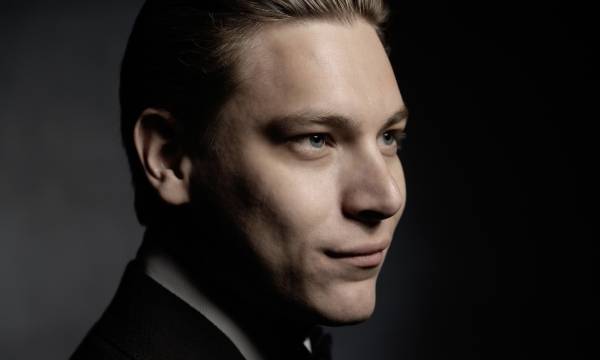
Klaus Mäkelä
Lees de biografie
Netherlands Radio Choir
Lees de biografie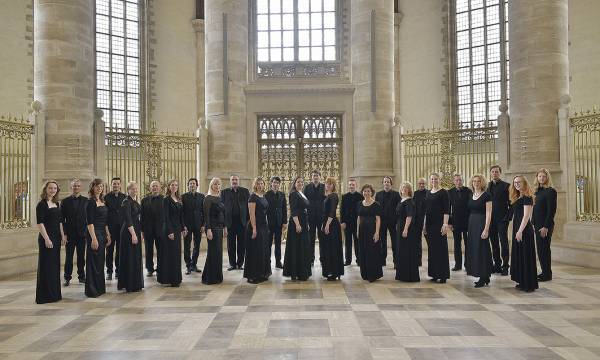
Laurens Symfonisch
Lees de biografie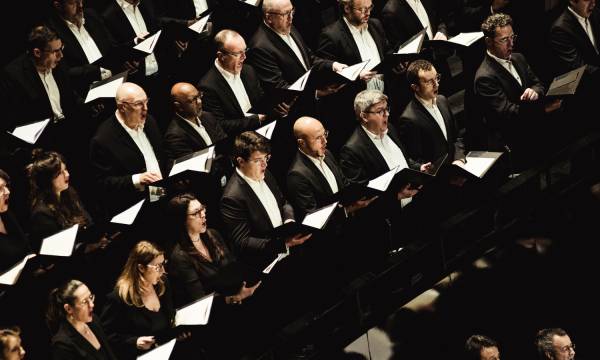
Le Chœur de l’Orchestre de Paris
Lees de biografie
National Children’s Choir and National Boys’ Choir
Lees de biografie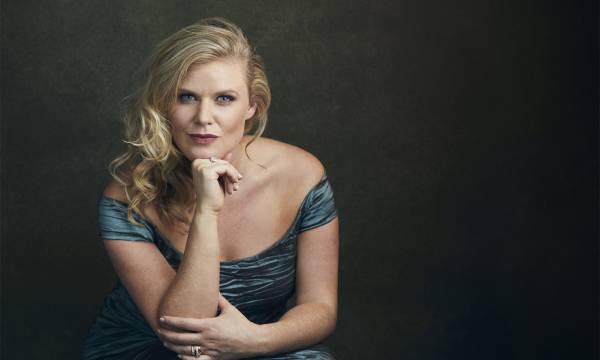
Hailey Clark
Lees de biografie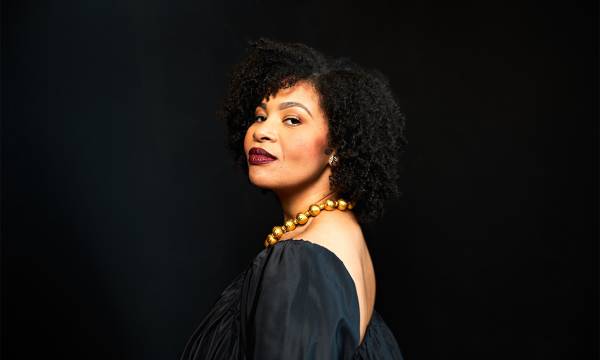
Golda Schultz
Lees de biografie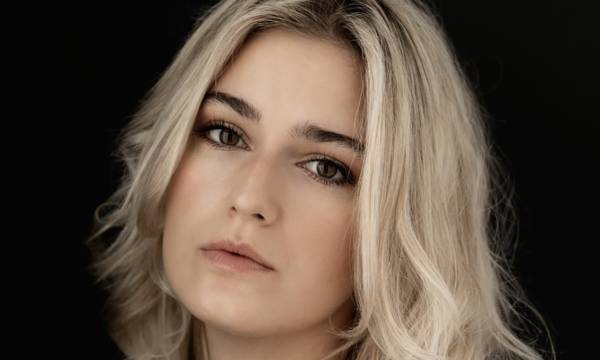
Miriam Kutrowatz
Lees de biografie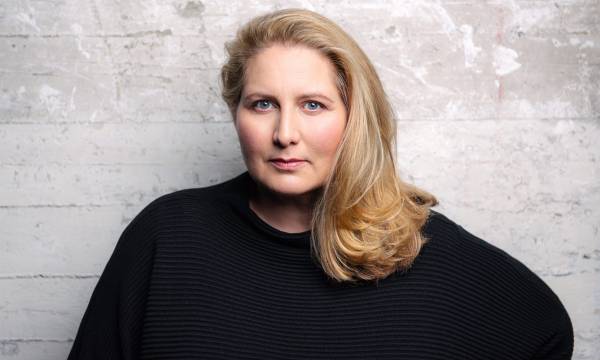
Okka von der Damerau
Lees de biografie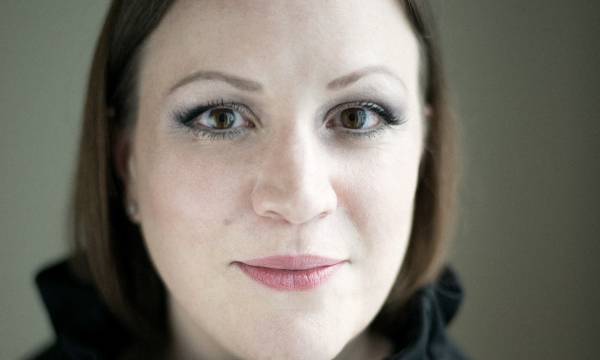
Jennifer Johnston
Lees de biografie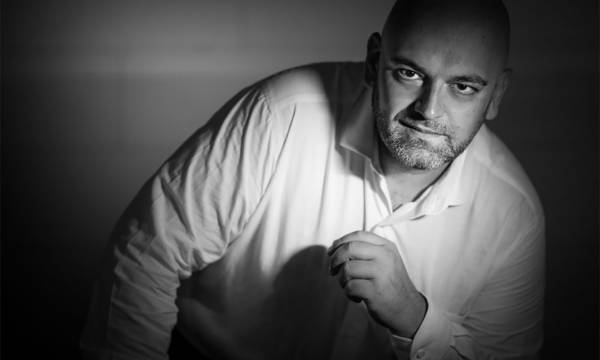
Giorgio Berrugi
Lees de biografie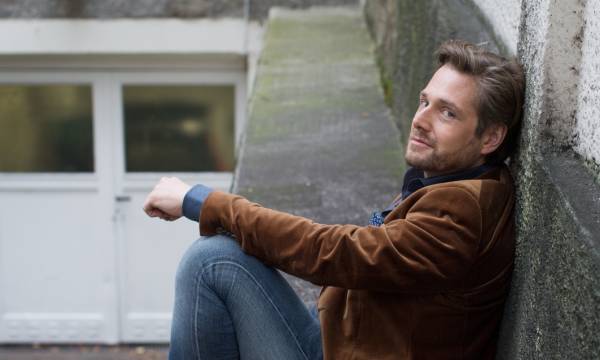
Michael Nagy
Lees de biografie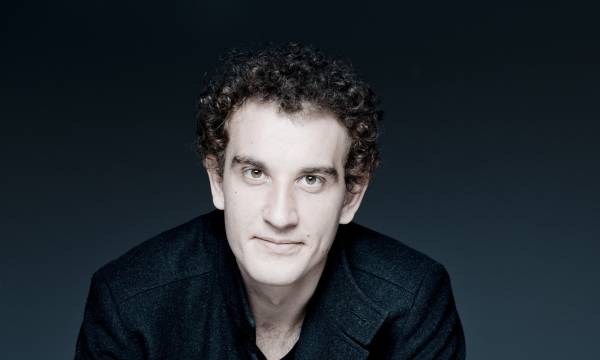
Tareq Nazmi
Lees de biografieRoyal Concertgebouw Orchestra (English), orchestra
Based in Amsterdam, the Royal Concertgebouw Orchestra was founded in 1888. Its very distinct, individual sound is partly due to the acoustics of The Concertgebouw. In 2022 the orchestra announced that Klaus Mäkelä will be its eighth chief conductor, commencing in September 2027.
His successors were Willem Kes, Willem Mengelberg, Eduard van Beinum, Bernard Haitink, Riccardo Chailly, Mariss Jansons and Daniele Gatti. Queen Máxima of the Netherlands is patroness. The Concertgebouw Orchestra has always collaborated with the world’s greatest conductors and soloists.
Such composers as Richard Strauss, Gustav Mahler and Igor Stravinsky all conducted the orchestra on more than one occasion. To this day, the orchestra continues to foster long-term relationships with contemporary composers. In addition to some eighty concerts performed at The Concertgebouw in Amsterdam, the orchestra gives forty concerts at other major concert halls throughout the world. The Academy of the Concertgebouw Orchestra successfully trains orchestral musicians of the highest calibre.
The biennial summer project Concertgebouworkest Young brings together talented young musicians from all over Europe who could use a little support. The Concertgebouw Orchestra is grateful for the financial support of the Dutch Ministry of Education, Culture and Science, the Municipality of Amsterdam, global partners ING, Unilever and Booking.com, sponsors, funds and numerous donors all over the world.
Klaus Mäkelä, conductor designate
Klaus Mäkelä has held the position of chief conductor of the Oslo Philharmonic Orchestra since 2020 and music director of Orchestre de Paris since 2021. In 2022 the Concertgebouw Orchestra announced that he will assume the title of chief conductor in September 2027.
In the same season the Finnish conductor will commence as music director of the Chicago Symphony Orchestra.
An exclusive Decca Classics artist, Klaus Mäkelä has recorded the Ballets Russes works of Debussy and Stravinsky with Orchestre de Paris. With the Oslo Philharmonic he has released the complete Sibelius Symphonies, as well as Sibelius and Prokofiev violin concertos with Janine Jansen. Shostakovich continues as a main composer focus in Mäkelä’s fifth season in Oslo. With a focus on French composers and new works, Mäkelä’s fourth season at the Orchestre de Paris will see guest performances across Europe and a return to Asia in June 2025.
His outstanding debut in September 2020 prompted the Concertgebouw Orchestra to invite him back four times within two years, subsequently naming him chief conductor designate. In the 2024-25 season, Mäkelä closely collaborates with the orchestra in a variety of programme, having conducted the Christmas Matinee and the Annual Gala concert as well as toured the United States, and leading Mahler’s Symphonies No. 1 and 8 at the 2025 Mahler Festival.
As a guest conductor he recently returned to the Berliner Philharmoniker and The Cleveland Orchestra, and made his first appearance with the Vienna Philharmonic. As a cellist Mäkelä partners with members of the Oslo Philharmonic, Orchestre de Paris and Concertgebouw Orchestra for occasional programmes and each summer performs at the Verbier Festival. Mäkelä studied conducting at the Sibelius Academy with Jorma Panula and cello with Marko Ylönen, Timo Hanhinen and Hannu Kiiski.
Netherlands Radio Choir, choir
The Netherlands Radio Choir, founded shortly after the Second World War, is the only professional choir in the Netherlands devoted to the large symphonic choral repertoire.
The choir is closely affiliated with the Dutch public broadcasting system NPO and sings frequently in several series: the NTR Saturday Matinee, The Sunday Morning Concert and AVROTROS Friday concert series.
Their repertoire spans contemporary music (commissioned works by Dutch and other composers), older works from the nineteenth and twentieth centuries, and opera. The Netherlands Radio Choir sings frequently with world-renowned orchestras, joining the Netherlands Radio Philharmonic Orchestra and the Concertgebouw Orchestra, with whom they have a long and fruitful association, for the broadcast series.
The Radio Philharmonic Orchestra and the Radio Choir shared the 2017 Concertgebouw Prize. Since 2020, their Chief Conductor has been Benjamin Goodson.
Laurens Symfonisch, choir
Laurens Symfonisch, part of the Rotterdam ‘choral family’ Laurens Vocaal, is a young symphonic choir conducted by Wiecher Mandemaker. Since 2010, the singers have enjoyed great success with their symphonic productions.
They regularly join the Rotterdam Philharmonic Orchestra, the Concertgebouw Orchestra and the Residentie Orkest.
The choir received the International Classical Music Award in the Choral Music category for their 2018 live recording of Honegger’s Jeanne d’Arc au bûcher, with the Concertgebouw Orchestra. Laurens Symfonisch appeared in The Concertgebouw in 2023 in Mahler’s Second Symphony with the Rotterdam Philharmonic Orchestra, conducted by Lahav Shani.
In the same year the choir worked with the Concertgebouw Orchestra on the world premiere of Tan Dun’s Requiem for Nature and Mahler’s Third Symphony, conducted by Klaus Mäkelä. They returned in 2024 for Schoenberg’s Gurre-Lieder, again with the Concertgebouw Orchestra and conductor Riccardo Chailly.
Le Chœur de l’Orchestre de Paris, choir
Le Chœur de l’Orchestre de Paris is a mixed symphonic choir affiliated with the Orchestre de Paris. The choir, made up of high-level amateur singers, was founded in 1976 on the initiative of Daniel Barenboim, then the orchestra’s Chief Conductor. Their first conductor was Arthur Oldham, a student of Benjamin Britten’s.
In 2023 the English conductor Richard Wilberforce was hired for a three-year term. The choir currently is headquartered in the Philharmonie de Paris. It has a tradition of working on the symphonic vocal concerts of the Orchestre de Paris, and also performs with other orchestras in France and abroad.
In 2012 the Académie du Chœur de l’Orchestre de Paris was founded, intended for young choral singers from 18 to 25. Out of the larger Chœur de l’Orchestre de Paris have come a chamber choir, a children’s choir and a youth choir.
This is the choir’s Concertgebouw debut.
National Children’s Choir and National Boys’ Choir, choir
The National Children’s Choir, founded in 1989, consists of talented children aged 10-15 from all over the Netherlands. Like the National Boys’ Choir, the choir is part of the National Choirs.
The children receive weekly lessons in small groups from teachers in their own regions, and come together every three weeks to prepare for concerts.
The National Children’s Choir has performed at a variety of national events, such as the baptism of Princess Amalia. Both choirs regularly perform with orchestras such as the Concertgebouw Orchestra, the Netherlands Radio Philharmonic Orchestra and the Berliner Philharmoniker. The National Boys’ Choir also trains soloists. The National Children’s Choir has toured Spain, Hungary, Switzerland, France, Germany and Sweden. Currently, the Artistic Director of both choirs is Irene Verburg.
Hailey Clark, soprano
Soprano Hailey Clark is much in demand in North American and European opera houses and concert halls. She studied at the University of Michigan School of Music and the University of Maryland School of Music.
The lyric soprano won The Metropolitan Opera’s Laffont Competition in New York and received an award from the Santa Fe Opera.
Her European debut in Salzburg’s Landestheater earned her the Österreichische Musiktheaterpreis for the best interpretation of a female leading role. Recent milestones include her performance of Richard Strauss’ Vier letzte Lieder in Ankara, Turkey and her debut with the Bayreuther Festspiele as Freia in Wagner’s Das Rheingold.
Clark made her Concertgebouw debut in 2024 in the NTR Saturday Matinee in Unsuk Chin’s opera Alice in Wonderland, conducted by Markus Stenz. The soprano is also a successful singer-songwriter: her debut single Unraveled was released in 2023, with the EP Sad Girl Songs the following year.
Golda Schultz, soprano
Golda Schultz studied journalism before her singing studies at the University of Cape Town and The Juilliard School of Music in New York. In 2011 she joined the Bayerische Staatsoper in Munich. Since then, she has appeared on the world’s great stages, including the Wiener Staatsoper, Salzburger Festspiele, La Scala in Milan and The Metropolitan Opera in New York.
The South African soprano is making her debut in The Concertgebouw during the Mahler Festival. Her debut album with pianist Jonathan Ware, This Be Her Verse, devoted to women composers, was released in 2022. Earlier this season, Schultz sang in Mahler’s Fourth Symphony with the New York Philharmonic.
She also performed in the Sächsische Staatskapelle Dresden’s New Year’s concert, and made her debuts with the Berliner Staatsoper as Sophie in Richard Strauss’ Der Rosenkavalier, and with the Royal Opera House Covent Garden in London as Fiordiligi in Mozart’s Così fan tutte.
Miriam Kutrowatz, soprano
Miriam Kutrowatz was part of the opera studio of the Wiener Staatsoper, where her roles included Konstanze in Mozart’s Die Entführung aus dem Serail and Gianetta in Donizetti’s L’elisir d’amore.
Recent roles include Eurydice in Monteverdi’s L’Orfeo at the Opernhaus Zürich and Arsena in Johann Strauss’ Der Zigeunerbaron at the Komische Oper Berlin.
As a concert singer she was a soloist in Mahler’s Eighth Symphony with the NDR Elbphilharmonie Orchester and the Czech Philharmonic. During the Mahler Festival she will make her Concertgebouw debut in the same symphony.
The Viennese soprano studied in her native Austria with Edith Lienbacher and finished her master’s with Florian Boesch. She was a winner of the Innsbruck Festival’s International Singing Competition for Baroque Opera and was a semi-finalist in the Glyndebourne Opera Cup 2020.
Okka von der Damerau, mezzo-soprano
The Hamburg native Okka von der Damerau began her singing studies in Rostock and completed them at the Hochschule für Musik in Freiburg.
She was a member of the ensemble of Munich’s Bayerische Staatsoper for many years, where she earned acclaim as Waltraute (Wagner’s Götterdämmerung), Erda (Wagner’s Das Rheingold, Siegfried), Charlotte (Zimmermann’s Die Soldaten) and Azucena (Verdi’s Il trovatore).
She was Fricka in Wagner’s Die Walküre at the Dutch National Opera in Amsterdam in 2019. The mezzo-soprano is also a welcome guest on many concert stages. Her Concertgebouw debut was in 2018 in Lili Boulanger’s Psaume CXXX ‘Du fond de l’abîme’. This season there is more Mahler in store for her: the Second Symphony with conductor Aziz Shokhakimov in Turin.
Jennifer Johnston, mezzo-soprano
Jennifer Johnston studied at Cambridge University and the Royal College of Music in London. Previously a BBC New Generation Artist and winner of the Royal Philharmonic Society’s Singer Award, she has close ties with the Bayerische Staatsoper in Munich, where she has given over eighty performances, and with the Royal Liverpool Philharmonic Orchestra, with whom she was artist in residence.
Mahler’s music has earned a special place in her heart. In September 2023 she sang with the Concertgebouw Orchestra in the Third Symphony with Klaus Mäkelä conducting. Her repertoire also includes the Second and Eighth Symphonies, the Rückert-Lieder, Das Lied von der Erde and the Lieder eines fahrenden Gesellen.
The English mezzo-soprano made her Concertgebouw debut in 2012 in Beethoven’s Missa solemnis with John Eliot Gardiner conducting. Her oeuvre is especially broad, from Bach to contemporary music.
Giorgio Berrugi, tenor
Italian tenor Giorgio Berrugi began his musical career as a clarinettist. Within months of beginning vocal studies in 2007, he had made his debut as Rodolfo in Puccini’s La bohème in Venice’s Teatro La Fenice.
From 2010 to 2013, he was in the ensemble of the Semperoper Dresden.
Acclaimed for his warm, expressive sound, Berrugi has performed in many operas and concerts. He has recently sung in Wagner’s Die Walküre (as Siegmund) with the Wiener Staatsoper, Cilea’s Adriana Lecouvreur with the Opéra de Paris, Mascagni’s Cavalleria rusticana in the Festspielhaus Baden-Baden, Puccini’s Madama Butterfly with the Berliner Staatsoper and Donizetti’s Lucia di Lammermoor in the Teatro Pavarotti in Modena. On the concert stage, he has sung in Mahler’s Eighth Symphony with the Wiener Philharmoniker.
Berrugi made his Concertgebouw debut in 2012 in a concertante performance of Puccini’s Tosca.
Michael Nagy, baritone
Michael Nagy was born in Germany to Hungarian parents. He received his first music lessons in Stuttgart with the Hymnus Chorknaben. He then studied singing with Rudolf Piernay, conducting with Klaus Arp and song interpretation with Irwin Gage.
He drew international attention after winning the Internationaler Wettbewerb für Liedkunst in Stuttgart in 2004.
Nagy sang in the ensemble of Komische Oper Berlin, after which he developed further singing leading roles with Oper Frankfurt. His guest appearances have taken him to many prominent opera houses. The baritone also travels all over the world as a concert and oratorio singer.
He has appeared as a soloist with many leading orchestras including the Concertgebouw Orchestra, the Berliner Philharmoniker, the Gewandhausorchester Leipzig, the Sydney Symphony Orchestra and at the Schleswig-Holstein Musik Festival and Salzburger Festspiele.
His first performance in The Concertgebouw was in 2012 in Beethoven’s Mass in C major conducted by Philippe Herreweghe.
Tareq Nazmi, bass
Bass Tareq Nazmi was born in Kuwait and grew up in Germany, where he studied singing with Edith Wiens and Christian Gerhaher at the Hochschule für Musik und Theater in Munich. His first opera experience was also in Munich, at the opera studio of the Bayerische Staatsoper, and he later joined the permanent ensemble.
His recent opera roles include Banco in Verdi’s Macbeth, Sarastro in Mozart’s Die Zauberflöte, Ferrando in Verdi’s Il trovatore and Gurnemanz in Wagner’s Parsifal.
His Concertgebouw debut was in 2017 in Beethoven’s Ninth Symphony, conducted by Markus Stenz. As a concert singer he has appeared in Beethoven’s Missa solemnis and in Verdi’s Messa da Requiem. He performed with the Concertgebouw Orchestra in 2019, singing Schumann’s Szenen aus Goethes Faust, conducted by John Eliot Gardiner. Nazmi is also an enthusiastic lieder singer.